Table of Contents
Updated on June 22, 2023
Introduction – Eco-friendly Air Care Solutions:
Have you ever stopped to consider the quality of the air you breathe indoors? It’s a critical aspect of our health and well-being that often goes unnoticed.
Indoor air pollution, stemming from sources like inadequate ventilation, mould, radon, and carbon monoxide, can have immediate and long-term health impacts.
In fact, the World Health Organization reports that 4.3 million people die annually due to poor indoor air quality.
So, what can we do to ensure the air in our homes and workplaces is clean and healthy?
This comprehensive guide will introduce you to eco-friendly air care solutions, focusing on sustainable air fresheners and purifiers.
We’ll delve into natural alternatives to chemical-based air fresheners, the role of plants in improving indoor air quality, and the impact of sustainable materials and design in air purification systems.
Are you ready to breathe easier and make a positive impact on the environment?
Let’s dive in!
Natural Alternatives to Chemical-Based Air Fresheners
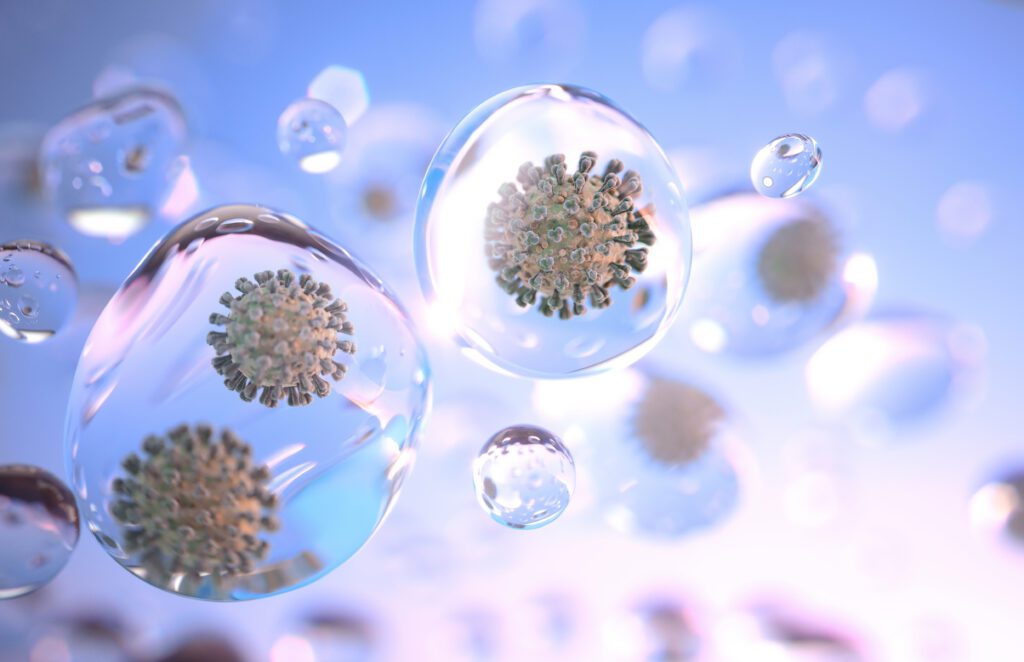

In the quest to keep our homes and offices smelling fresh and inviting, we often reach for air fresheners without giving much thought to what’s inside them.
However, many of these products contain synthetic fragrances and other chemical compounds that can be harmful to our health and the environment.
But fear not, as there are several natural alternatives that can freshen your air without the negative impacts.
Essential Oils and Their Benefits
In the world of natural air fresheners, essential oils reign supreme. Derived from plants, these oils carry the scent of their source and have been used for centuries in aromatherapy.
But did you know they can also purify the air?
Certain essential oils like tea tree, eucalyptus, and lemon have antimicrobial properties, helping to eliminate airborne bacteria and viruses
Derived from plants, essential oils not only provide a pleasant aroma, but many also have antimicrobial properties that can help purify the air.
- Lavender is known for its calming effects, perfect for creating a relaxing atmosphere.
- Citrus oils, like lemon or orange, provide a fresh and uplifting scent.
- Peppermint and Eucalyptus are known to help with respiratory issues and provide a refreshing aroma.
Beeswax Candles
Unlike paraffin candles, which can release harmful chemicals when burned, beeswax candles are a natural alternative that can actually improve air quality. They produce negative ions when burned, which can help remove pollutants from the air.
Baking Soda
Often used in refrigerators to neutralize odours, baking soda can also be used throughout your home as a natural air freshener. Simply place some baking soda in a bowl or open container and let it work its magic.
House Plants
Several houseplants, such as English ivy and spider plants, are known to purify air naturally. They absorb carbon dioxide and release oxygen, improving air quality.
While these natural alternatives may not have the overpowering scent of some synthetic air fresheners, they provide a subtle, refreshing aroma without the negative environmental impact. Plus, many of these options offer additional benefits, such as the relaxing effect of certain essential oils or the air purifying properties of beeswax candles and houseplants.
Remember, if you’re purchasing products like essential oils or beeswax candles, look for ones that are pure and free from synthetic additives.
And when it comes to plants, make sure you’re choosing ones that are suitable for your living conditions and that you’re able to care for properly.
By making the switch to natural air fresheners, not only will you be improving the air quality in your home or office, but you’ll also be taking a step towards a more sustainable lifestyle.
DIY Air Fresheners: Recipes and Instructions
If you’re feeling crafty, why not create your own natural air freshener? It’s easier than you might think, and it allows you to customize the scent to your liking.
For a simple DIY air freshener, combine distilled water, witch hazel, and your favorite essential oils in a spray bottle.
Shake well before each use, and voila! You have a homemade, eco-friendly air freshener.
The Role of Plants in Improving Indoor Air Quality
Plants have long been known as the “lungs of the Earth” due to their ability to absorb carbon dioxide and release oxygen through the process of photosynthesis.
But it’s not just outside where plants have a role to play – they can also significantly improve indoor air quality, making our homes and workplaces healthier environments.
Top Air-Purifying Plants and Their Care
Plants are nature’s air purifiers. They absorb carbon dioxide and release oxygen, but they also filter out harmful toxins from the air. These plants are not only effective at cleaning the air, but they’re also low maintenance, making them perfect for indoor use.
Indoor plants act as natural air purifiers, removing pollutants from the air through a process called phytoremediation. Some indoor plants are particularly effective at this, including:
- Spider Plants: Known for their ability to remove formaldehyde and xylene from the air, spider plants are hardy and easy to care for, making them a popular choice for indoor gardening.
- Snake Plants: Also known as Mother-in-Law’s Tongue, these plants are exceptional at removing benzene, formaldehyde, trichloroethylene, and xylene from the air. An added benefit is that they release oxygen at night, making them a great choice for bedrooms.
- English Ivy: This plant is effective at reducing airborne fecal matter particles and filtering out formaldehyde.
- Peace Lilies: Not only are these plants beautiful, but they’re also efficient at removing several types of toxins from the air, including benzene, formaldehyde, and trichloroethylene.
The Science Behind How Plants Purify Air
Plants purify the air through a process called phytoremediation. They absorb pollutants through their leaves and roots, then transport these toxins to their roots where they’re converted into harmless substances.
Some plants can even break down volatile organic compounds (VOCs), common type of indoor air pollutant, into non-toxic substances.
Sustainable Materials and Design in Air Purification Systems
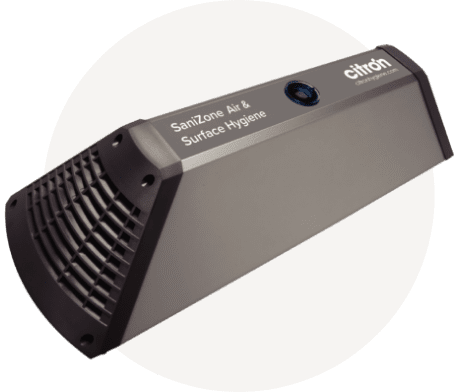

In the modern era, the focus on sustainability has intensified, especially in product design. Air purification systems, a staple in many homes and offices, are no exception.
Many manufacturers are now prioritizing sustainable materials and eco-friendly designs in their products, leading to significant environmental benefits.
Eco-Friendly Materials in Air Purifiers
As we strive for sustainability, it’s essential to consider the materials used in our air purification systems. Many manufacturers are now using eco-friendly materials like bamboo, coconut fiber, recycled plastics, and biodegradable filters. These materials not only reduce the environmental impact of the product but also often improve the efficiency and effectiveness of the air purifier.
Eco-friendly materials often have a smaller environmental footprint compared to traditional ones. They may be recyclable, biodegradable, or sourced from sustainable origins. Here are a few examples of sustainable materials being used in air purifiers:
- Coconut Shell Carbon: Coconut shell is a highly renewable resource, and when it’s turned into charcoal, it acts as a natural purifier by absorbing harmful pollutants from the air.
- Recycled Plastics: Some air purifiers use parts made from recycled plastics, significantly reducing their environmental impact.
- HEPA filters made from recyclable materials: High-Efficiency Particulate Air (HEPA) filters trap microscopic particles and allergens. Eco-conscious companies are now making these filters from recyclable materials.
The Power of Energy Efficiency
Commercial Air purifiers that use less electricity without compromising performance are another example of sustainability in design.
By using energy-efficient motors and designs that optimize air flow, these systems reduce energy consumption and, as a result, carbon emissions.
How Sustainable Design Impacts Lifecycle
The design of an air purifier can significantly impact its sustainability. Energy-efficient designs that use less electricity, designs that allow for easy filter replacement to extend the product’s life, and compact designs that reduce material usage are all ways that design can contribute to a more sustainable air purifier.
Sustainable design extends beyond the materials used and includes the entire lifecycle of the product. This means considering the environmental impact of the product from production to disposal. Manufacturers are striving to design air purifiers that last longer, require fewer filter replacements, and are easier to recycle at the end of their life.
Choosing a Sustainable Eco Friendly Air Purifier
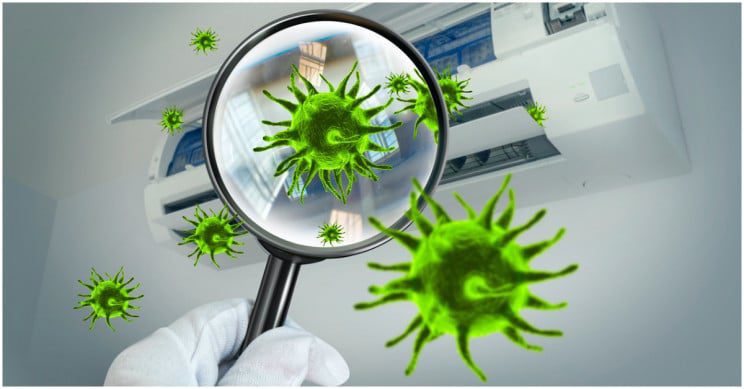
When choosing an air purifier, consider the following:
- Materials: Look for air purifiers made from sustainable, recyclable, or biodegradable materials.
- Energy Consumption: Consider the energy efficiency of the air purifier. Some models may have Energy Star ratings or other certifications.
- Filter Replacement: Consider how often the filter needs to be replaced and whether the old filters are recyclable.
- Lifespan: Look for models designed to last, reducing the need for replacement.
Sustainable design in air purification systems not only helps to reduce the environmental impact but also often leads to more durable and efficient products. By choosing air purifiers that prioritize sustainability, you’re helping to create a healthier environment both inside and outside your home.
Life Cycle Assessment of Air Care Products
Understanding the Environmental Footprint of Air Care Products
Every product we use has an environmental footprint, and air care products are no exception. The environmental footprint of a product is the impact it has on the environment throughout its life cycle, from the extraction of raw materials to production, distribution, use, and disposal. For air care products, this could include the energy used in manufacturing, the materials used for packaging, and the impact of disposing of the product or its packaging.
Strategies for Reducing the Life Cycle Impact of Air Care Products
Reducing the life cycle impact of air care products can be achieved in several ways. One approach is to choose products made with sustainable materials, such as biodegradable filters or recyclable packaging.
Another strategy is to opt for products that are designed to be refillable or reusable, reducing the need for new products to be manufactured.
Finally, choosing energy-efficient air purifiers can also help to reduce the environmental impact.
Regulations and Certifications for Eco-Friendly Air Care Solutions


Eco-friendly air care solutions are subject to both regulations and certifications aimed at ensuring their sustainability and environmental friendliness. Here’s a look at what’s involved in this:
Understanding Eco-Labels and Certifications
Eco-labels and certifications are tools that can help consumers identify products that meet certain environmental standards.
For air care products, these might include certifications for energy efficiency, low VOC emissions, or the use of sustainable materials. Understanding these labels can help you make more informed choices when purchasing air care products.
The Role of Government Regulations in Promoting Sustainable Air Care
Government regulations also play a crucial role in promoting sustainable air care. These regulations might set standards for energy efficiency, limit the use of certain harmful chemicals, or require manufacturers to disclose certain information about their products.
By complying with these regulations, manufacturers can help to reduce the environmental impact of their products .
Air care products are subject to various environmental regulations to limit their impact on the environment.
For example, in California, the Air Resources Board has established regulations to reduce volatile organic compounds (VOCs) emissions from consumer products, including air care solutions1.
To ensure compliance with these regulations, resources are available to help producers. This includes:
- Product Determination: CARB staff provide clarifications on regulations as they apply to specific products1.
- Innovative Product Exemption: This provision allows for alternatives to complying with VOC standards.
- Alternative Control Plan: This plan offers an alternative method of complying with VOC standards by voluntarily entering into separate control plans.
- Charcoal Lighter Material: Specific requirements must be met to sell, supply, or offer charcoal lighter material products for sale in California and the South Coast Air Quality Management District.
- Windshield Washer Fluid: The VOCs in windshield washer fluids are limited to low concentrations in lower, warmer elevations. Higher VOC concentrations are allowed in higher elevations where freezing conditions are expected.
- Variances: Those unable to comply with specific requirements due to extraordinary reasons beyond their control may apply for a variance.
- LVP-VOC Research: LVP-VOCs used in consumer products are not counted towards the total product VOC content for compliance purposes.
CARB also develops regulatory guidance documents to clarify specific sections of the Consumer Products Regulation and provides advisories to keep the industry informed of regulatory changes.
Certifications for Eco-friendly Air Fresheners
Certifications offer a way for producers to demonstrate their commitment to sustainability and environmental responsibility. The National Registry of Environmental Professionals (NREP) offers a variety of environmental certifications. Some of these, relevant to the field of air care, include:
- Registered Environmental Manager
- Registered Environmental Professional®
- Certified Environmental and Safety Compliance Officer®
- Registered Environmental Property Assessor SM
- Certified Environmental Auditor SM
- Certified Indoor Air Quality Manager
- Certified Natural Resources Professional
- Certified Waste Management Professional2.
Each certification has its own set of qualifications, often requiring the necessary educational degrees and experience, passing an exam, and payment of fees. Once these requirements are met, the applicant becomes certified2.
Different careers commonly pursued by certificate holders include air quality engineer, conservation scientist, environmental consultant, environmental health & safety specialist, environmental project manager, and chief sustainability officer. The certifications held by these professionals can provide valuable insight into multiple professions.
It’s important to note that certifications require a recertification process, which generally includes updating information in the Registry, completing continuing education or community environmental service hours, keeping records of completed requirements, and submitting a Summary of Activities form and fee.
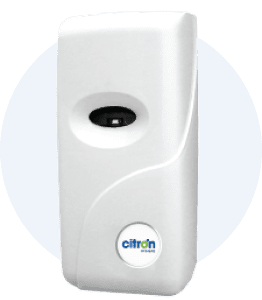

Intersection of Air Care and the Circular Economy
In the context of air care solutions, the concept of a circular economy represents a shift from the traditional linear model of “take, make, and dispose” to a more sustainable model where resources are used and re-used in a circular fashion. This approach can significantly reduce waste and environmental impact.
Circular Economy Principles Applied to Air Care
- Design for Longevity: This involves creating air care products that are durable and long-lasting, reducing the need for frequent replacement and thus reducing waste.
- Design for Service and Lease: In this model, companies retain ownership of their products and lease them to consumers. This encourages companies to create products that are durable and easy to maintain or repair.
- Design for Reuse in Manufacture: Products are designed so that they can be easily disassembled, and the components reused in the manufacture of new products. This can be particularly relevant for air purifiers, where components such as fans or housing might be reusable.
- Design for Material Recovery: Products are designed in such a way that materials can be recovered and recycled at the end of the product’s life. This might involve using materials that are widely recyclable, or designing products so that they can be easily disassembled for recycling.
- Design for Biological Nutrients: In the context of air fresheners, this might involve using ingredients that are biodegradable and compostable, allowing them to be returned to the earth at the end of their life.
Benefits of Circular Economy in Air Care
Embracing a circular economy approach in air care solutions has several benefits:
- Environmental Impact: By reducing waste and making better use of resources, the environmental impact of air care products can be significantly reduced.
- Cost Efficiency: The circular economy can also lead to cost savings. By designing products to be long-lasting, repairable, and recyclable, companies can reduce their material costs.
- Innovation and Competitive Advantage: Adopting circular economy principles can drive innovation and provide a competitive advantage, as companies develop new, more sustainable products and business models.
- Regulatory Compliance: As environmental regulations become more stringent, adopting a circular economy approach can help companies to stay ahead of regulatory changes and avoid potential fines or sanctions.
- Consumer Demand: With growing consumer awareness of environmental issues, there is increasing demand for more sustainable products. Companies that can demonstrate their commitment to sustainability through a circular economy approach are likely to appeal to these consumers.
References
- Circular economy principles in the aviation industry
- Circular Economy (icao.int)
- Complying with the Consumer Products Regulations | California Air Resources
Role of Consumer Awareness in Driving Sustainable Air Care Solutions
Consumer awareness is playing a critical role in driving the air care industry towards more sustainable solutions.
Despite economic challenges and increasing prices, consumer sustainability awareness remains strong, with two-thirds of global consumers expressing concern about climate change and a willingness to contribute positively to the environment.
Consumers are demonstrating a preference for sustainable products that use resources like water and energy more efficiently, thereby reducing costs. They’re also showing an increasing interest in circular solutions like second-hand and previously owned products.
Brands that facilitate the adoption of sustainable lifestyles are better positioned and preferred by conscious consumers.
The Impact of Consumer Behavior on the Air Care Industry
Consumer behavior is exerting a significant influence on the air care industry, particularly in relation to sustainability. The trend towards net-zero and carbon-negative targets is a response to consumer demand for companies to demonstrate their environmental commitment. For instance, 57% of global professionals reported that their companies are planning to develop products with carbon-neutral claims.
Consumers are increasingly favoring companies that aim for carbon-negative strategies, which involve generating more environmental benefits than CO2 emissions.
The rising trend of circularity through collaboration also reflects changes in consumer behavior, with consumers favoring companies that return more to the environment than they take. This shift in consumer behavior is driving innovation in the air care industry, with more companies now offering sustainable air care solutions .
- Demand drives supply: If consumers demand sustainable air care products, manufacturers will respond by producing them.
- The influence of consumer trends: Trends such as the move towards natural, eco-friendly products influence product development and marketing strategies within the air care industry.
- The role of consumer feedback: Companies listen to their consumers. Feedback about products can directly influence future development, pushing for more sustainable and effective air care solutions.
How to Make Informed Choices When Buying Air Care Products
Making informed choices when buying air care products involves understanding the environmental impact of the product, looking for eco-labels and certifications, and considering the product’s life cycle.
By choosing products that are made with sustainable materials, designed to be reusable or recyclable, and certified as eco-friendly, consumers can contribute to a more sustainable air care industry .
More tips –
- When buying air care products, consumers should consider the environmental impact of their choices. Opting for products that use resources efficiently and contribute to the circular economy can help drive sustainability.
- Consumers can look for products from companies that have made net-zero pledges or aim for carbon-negative targets, reflecting a commitment to environmental sustainability.
- Consumers should also consider the companies’ collaboration efforts in the circular economy, as these can contribute significantly to sustainability.
- Regulation is another factor to consider. Companies that proactively collaborate with stakeholders and comply with regulations are likely to be more sustainable and contribute more effectively to climate change mitigation.
- Know what to look for: When buying air care products, it’s important to check for certain indicators of sustainability, such as eco-labels or certifications.
- Understand the ingredients: Consumers should strive to understand the ingredients in air care products. Some ingredients may be harmful to the environment or the individual’s health.
- Do your research: Before making a purchase, consumers should research different brands and products to find the most sustainable and effective options.


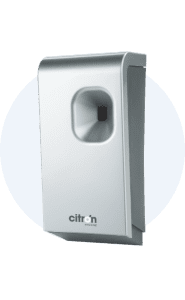

The Future of Sustainable Air Care: Trends and Predictions
As we look to the future, we can expect to see continued innovation in the field of sustainable air care. This might include the development of new materials and technologies, the adoption of circular economy principles, and increased regulation and certification of eco-friendly products.
As consumers continue to demand more sustainable products, companies that can provide these solutions will be well-positioned for success .
The rise of natural ingredients: The trend towards natural, eco-friendly products is expected to continue. More air care products will likely feature natural ingredients and avoid harmful chemicals.
Increased consumer awareness: As consumers become more aware of the impact of their choices, they’ll continue to demand more sustainable options. This will drive further innovation and sustainability in the air care industry.
Technological advancements: Technological advancements will likely lead to new, innovative air care solutions that are more sustainable and effective.
How Individuals Can Contribute to a More Sustainable Air Care Industry
Each one of us can play a role in promoting a more sustainable air care industry. This can be as simple as choosing eco-friendly air care products or as involved as advocating for stronger regulations and standards. By making informed choices and demanding more from the companies we buy from, we can all contribute to a healthier and more sustainable future.
Improving indoor air quality doesn’t have to come at the expense of our environment. By choosing natural alternatives to chemical-based air fresheners, utilizing plants as natural air purifiers, and opting for air purifiers made with sustainable materials and design, we can breathe easier and live more sustainably.
Remember, every small step counts. Whether it’s choosing an air purifier made from sustainable materials, opting for a refillable air freshener, or simply being more mindful of the environmental impact of the products we use, each action we take can make a difference. So let’s take those steps together, for the sake of our health and the health of our planet.
References
- https://www.ccacoalition.org/en/resources/world-health-organization-%E2%80%93-burden-disease-joint-effects-household-and-ambient-air
- https://www.ncbi.nlm.nih.gov/pmc/articles/PMC5206475/
- https://www.eldercarehomehealth.com/wp-content/uploads/2015/08/nasa-guide-to-indoor-plants.pdf
- https://www.researchgate.net/publication/333943361_PHYTOREMEDIATION_OF_INDOOR_POLLUTION-A_MINI_REVIEW_Corresponding_Author
- https://www.consumerreports.org/appliances/air-purifiers/buying-guide/
- https://edition.cnn.com/cnn-underscored/home/how-to-choose-air-purifier
Related posts:
- A Complete Guide To Buying Commercial Air Purifiers [2024]
- Menstrual Cups vs Tampons – Which Are Better? [GUIDE]
- How to Make Your Business More Family-Friendly
- Why Indoor Air Quality (IAQ) Matters & Health Benefits of Air Purification Systems
- Complete Guide to Buying Commercial Air Freshener & Dispensers
- Free Guide to Elevate Airport Hygiene
![Sustainable Eco-friendly Air Fresheners & Purifiers [2023 Guide]](https://www.citronhygiene.com/wp-content/uploads/2022/08/Air-care-Flowers.png)